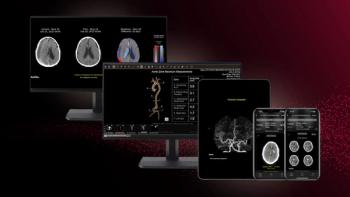
COVID-19 Stability Varies Based on Imaging Equipment Surface
Study finds virus lifespan depends on the type of material used for the contaminated surface.
As radiology departments nationwide are continuously cleaning CT scanners and other equipment used to treat patients with suspected COVID19 infection, new research released Tuesday indicates the virus can remain stable on different surfaces for varying amounts of time.
A new study, published in the
“The results provide key information about the stability of SARS-CoV-2, which causes COVID19 disease, and suggests that people may acquire the virus through the air and after touching contaminated objects,” according to a press release issued by the NIH.
This variability in time can impact the many types of surfaces used in imaging equipment differently, making decontamination efforts even more important.
According to the study results, SARS-CoV-2 stays stable for up to:
- 3 hours in aerosols
- 4 hours on copper
- 24 hours on cardboard
- 2-to-3 days on plastic
- 2-to-3 days on stainless steel
Related Content:
The study compared how the environment affects SARS-CoV-2 and SARS-CoV-1, the virus that caused the SARS epidemic in 2002 and 2003. Researchers mimicked the many ways the virus could end up on surfaces in a hospital setting, such as coughing or touching objects. Based on the stability of the virus, they determined infected individuals could be spreading it either without – or before – recognizing symptoms.
Consequently, the ease of transmission and the virus’s stability in aerosols and on surfaces, underscores the critical nature of thoroughly cleaning imaging equipment that come in contact with any patient suspected of COVID19 exposure.
Newsletter
Stay at the forefront of radiology with the Diagnostic Imaging newsletter, delivering the latest news, clinical insights, and imaging advancements for today’s radiologists.



























